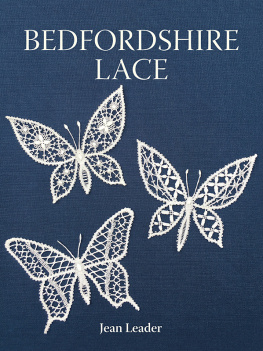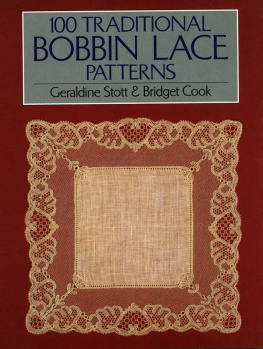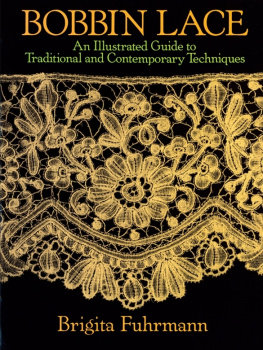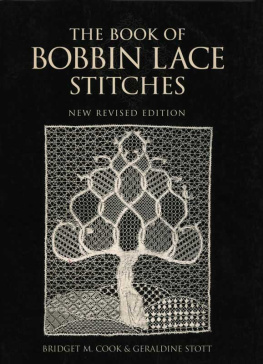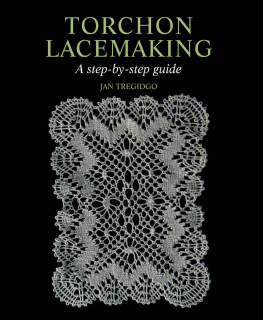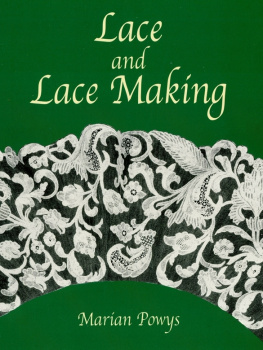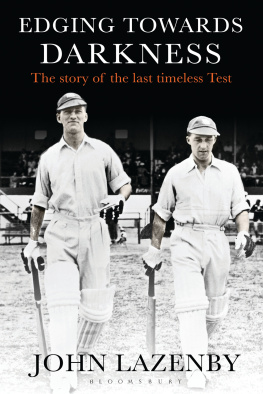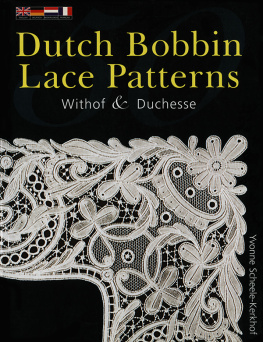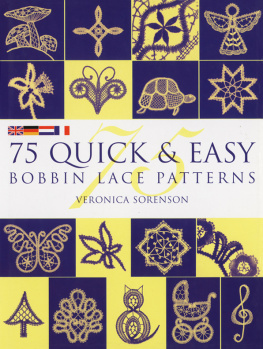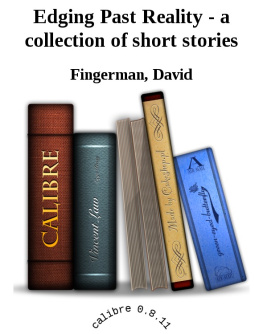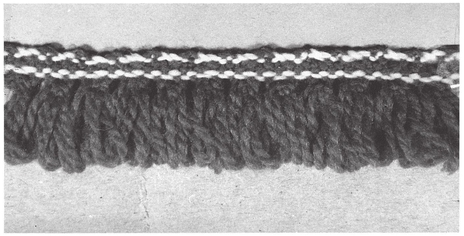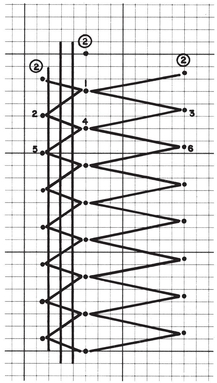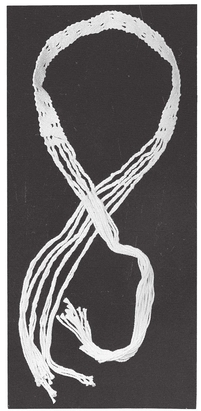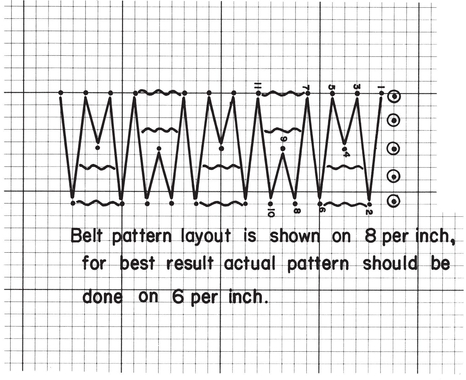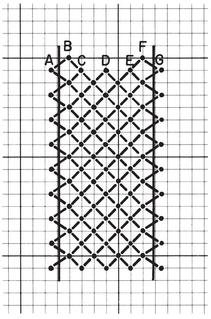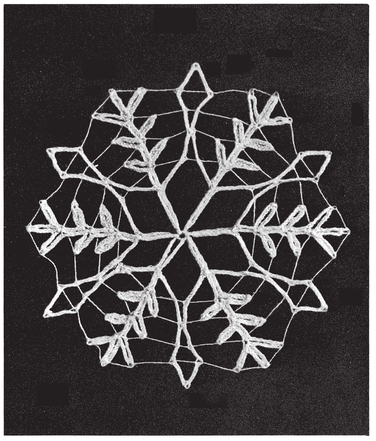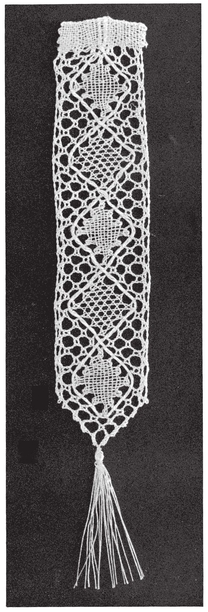BOOKS ON TECHNIQUES
Channer, C. C., Lacemaking , Point Ground . Revised by M. Waller. Dryad Press, Leicester, England, 1970.
Cook, Bridget M., Practical Skills in Bobbin Lace , Dover Publications, Inc., New York, 1987.
Mincoff and Marriage, Pillow Lace , John Murray, London, 1907.
Nottingham, Pam, The Technique of Torchon Lace , B. T. Batsford, London, 1979.
Paulis, L., Technique and Design of Cluny Lace, 1921. Reprinted 1984 by Ruth Bean, Bedford, England.
Read and Kincaid, Milanese Lace , B. T. Batsford, London, 1988.
Thompson, Susanne, Introduction to Honiton Lace , B. T. Batsford, London, 1985.
HISTORY AND LACE IDENTIFICATION
Earnshaw, Pat, A Dictionary of Lace , Shire Publications, Ltd., Aylesbury, Bucks, England, 1980.
Powys, Marian, Lace and Lace Masking , Charles T. Branford Co., Boston, 1953.
Things to Make
H ere are a few ideas, mostly very simple, to show the versatility of the bobbin lace technique. Some of these could be made early in the lessons.
A FRINGE
This fringe is a useful trim for apparel or for sofa pillows and is easily made with bobbins. Get out your largest bobbins! The 2 pairs that form the fringe use up fast. Sport yarn was used for the sample. Knitting worsted would make a thicker fringe or 3 pairs instead of 2 could be used for the fringe side. Six pairs of bobbins are required. The first pair at the left is the worker pair and the next 3 pairs are passives in the heading. Yarns wound on 5 and 6 are brought to the right around the pin to make the fringe, joining with the worker pair in cloth stitch at # 1 and #4, and so on. The heading is simple cloth stitch throughout.
A BELT
The material used for this belt (because it was at hand) is a heavy, soft-finish cotton. In spite of the yarns soft finish, it made up into a respectably firm belt because the yarn packed in well. A harder-finish cotton or perhaps rug wool should be even better for this project. A stiff cord such as navy cord or a fine-weight mason line works up into a bobbin-woven belt as substantial as one of macram knots. The pattern must be adjusted to correspond to the cord used, of course.
One pair of bobbins does the weaving throughout, the other 9 pairs of cords being used as passives. This makes it easy to calculate yardage needed. The warps (passives) need to be the length of the finished belt plus an allowance for take-upthe extra length needed to weave in and out through the weaver pair. Two-yard warp lengths were used for this belt and 6 yards or more for the weaving pair. If long tie ends are desired, leave longish ends of all cords loose at the beginningsay about 20 inchesand then knot 2 pairs of cords together at a time. Pin 2 pairs of cords at each of the 5 dots at the top of the pattern10 pairs in all, or 20 cords. You may want to plan a buckle fastener instead of ties. In this case you will want to begin without knots (Lesson 7).
The use of a macram board and T-pins is recommended for weaving belts. Much pulling and adjusting are necessary and an ordinary lace pillow and pins would not support the tension.
The pattern and picture are self-explanatory. The only difficulty you will probably have is managing the heavy cords and maintaining an even tension, keeping the cloth stitch smooth and even. At both ends of the belt make braids for a few inches and then make an overhand knot to secure each braid, leaving long ends for tying.
TORCHON IN TECHNICOLOR
If youve been yearning to try something in color, here is a fascinating project. This simple and effective design is from Marguerite Jackson. A colorful variation on a basic Torchon ground pattern, the idea is so simple and effective I keep wondering, Why didnt I think of that?
Torchon in Technicolor pattern .
The illustrated sample was made with 20/2 linen in green, white, and rose, on a pattern charted on 5-per-inch graph paper. I tried it with #5 pearl cotton and a pattern on 6-per-inch paper, which also worked very well. I used simple Torchon groundTC, pin, TC. Marguerites is made with Torchon II, TTC, pin, TC. Of course, endless color combinations are possible. Twelve pairs of bobbins are needed. The pictured sample began with 2 pairs green at A, 1 pair white at B, 2 pairs white at C, 2 pairs rose at D, 2 pairs white at E, 1 pair white at F, 2 pairs green at G.
A BOOKMARK
Make a pattern using a length of almost any insertion pattern. The example shown is basically a section of the insertion from Lesson 9. Hang the bobbins (wound in pairs) from temporary pins and pull down the threads later to eliminate the beginning loops as described in Lesson 7. Work to the length desired and finish off with a closely spaced section of cloth stitch. The ends may be finished in a number of ways. I made short braids all across, cut off the threads, and folded the braids under, out of sight, and fastened them with a bit of glue. The finished bookmark could be mounted on a wide grosgrain ribbon to provide a firm background. The tassel was added lasta cluster of threads looped through the tip and tied tightly with another thread to secure them.
A SNOWFLAKE
Snowflake, designed and worked by Mary McPeek .
This bit of bobbin lace fantasy is by Mary McPeek. Wouldnt this be a beautiful Christmas tree decoration? Or imagine five or six of them made into a Christmas mobile. Mary used no. 30 crochet cotton for the 2 pairs of workers that make the braidsthe main part of the snowflake. Hang these at A. Four pairs of passives follow the dotted lines and these should be of the finest thread available. They should be nearly invisible. Hang on a pair each at I, G, E, and A.


